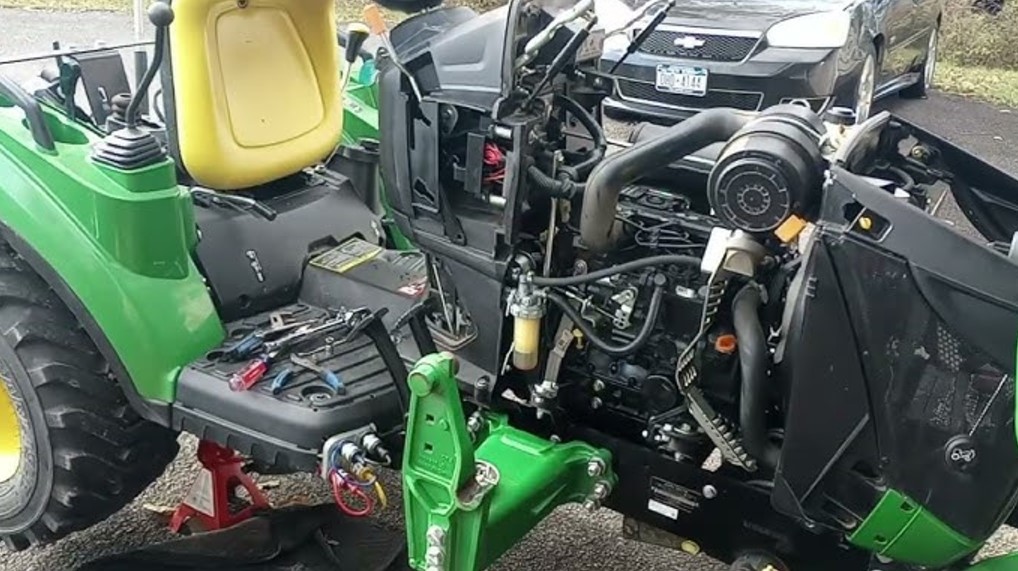I recently got a new John Deere 1025R equipped with a front-end loader (FEL), a 60-inch belly mower, a Power Flo blower, a chute, and a grass collection system. I’ve been driving it around, doing light mowing and small FEL tasks, all while keeping the equipment attached to get used to how everything works. So far, I haven’t removed any of the attachments.
The main issue I’m encountering is that the tractor’s engine starts giving overheating warnings after only a few minutes of light use. A warning light appears on the dashboard, and the LED display shows the message “Engine De Hea,” with the temperature gauge arrow moving into the hot zone. Both the engine oil and coolant levels are fine, and the radiator screen is clean. I’m struggling to understand why the engine would overheat during such light tasks, even in the Texas heat, while carrying this equipment. Am I missing something? I’d appreciate any advice.
This seems like an issue that might need to be addressed under warranty. A few possible causes that come to mind are a clogged radiator, a malfunctioning thermostat, or a faulty water pump. For comparison, I haven’t experienced any overheating problems with my 1025R FILB.
It sounds frustrating to deal with overheating, especially with light tasks. Here are some things you can check and try to troubleshoot the issue:
- Radiator and Cooling System
- Even if the radiator screen appears clean, debris can sometimes accumulate between the radiator and the screen or within the fins. Remove the screen and inspect the radiator closely for any blockage or buildup.
- Make sure the radiator fan is operating properly. Sometimes, obstructions or a faulty fan can reduce airflow.
- Coolant
- Double-check the coolant level in the overflow tank and the radiator itself (when the engine is cool). Ensure you’re using the correct type of coolant recommended by John Deere.
- Look for any leaks in the hoses or connections that might reduce cooling efficiency.
- Thermostat
- A thermostat that’s stuck closed can prevent proper coolant circulation. This would require inspection and possibly replacement by you or a technician.
- Water Pump
- A failing water pump can also cause overheating by not circulating the coolant effectively. Check for leaks or unusual noises coming from the pump area, as these could be signs of a problem.
- Equipment Load
- While the tractor should handle this equipment under normal conditions, overheating could occur if the engine is under excessive strain due to an issue with the attachments. Try removing the mower or grass collection system temporarily to see if the overheating persists.
- Texas Heat Considerations
- Extreme temperatures can exacerbate any cooling issues. Ensure you’re operating in lower RPMs when doing light tasks and give the engine a chance to cool down if you’ve been running it for a while.
If none of these steps resolve the issue, it’s best to reach out to your dealer. Overheating with light use shouldn’t happen, and this could be a manufacturing defect that needs to be addressed under warranty. Let them know everything you’ve tried, as it might help them diagnose the issue faster.

